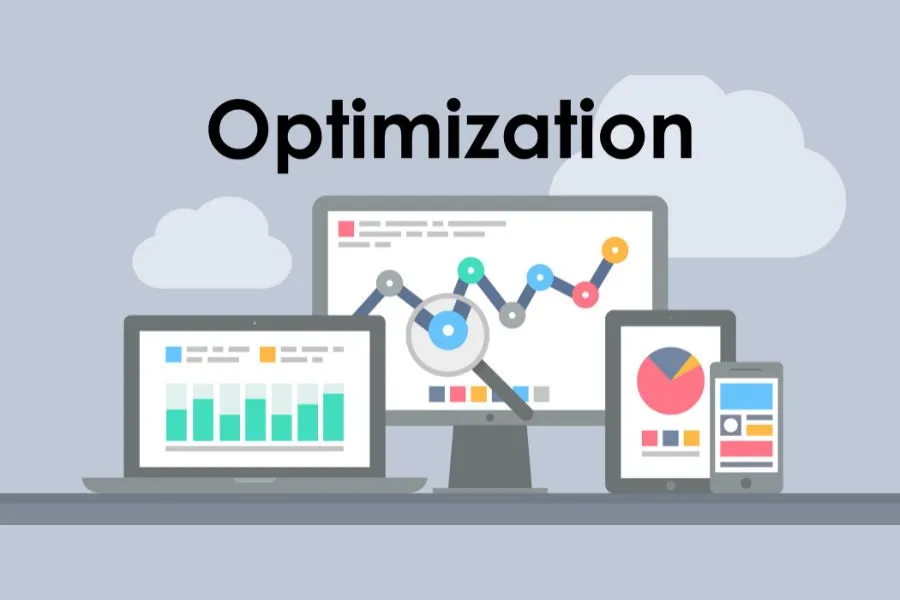How to Use BigSpy to Optimize Your Advertising Strategy?

What is an Advertising Strategy?
An advertising strategy is a series of plans and methods developed by a business or advertiser to achieve marketing goals by delivering advertising messages to the target audience at the right time, place, and environment. It encompasses media selection, budget allocation, timing, and content creation to maximize ad effectiveness and return on investment (ROI).
When formulating an advertising strategy, focus on the following key elements:
- Target Audience Analysis: Identify the consumers or user groups the ad is intended for. Understand and analyze their characteristics, behavior, needs, and preferences to ensure the ad message reaches potential customers accurately.
- Media Selection: Choose appropriate advertising media channels based on the media consumption habits of the target audience, such as TV, newspapers, magazines, internet, social media, outdoor ads, etc.
- Budget Allocation: Determine the advertising budget and allocate it reasonably across different media channels and advertising activities to ensure effective use of funds.
- Timing: Determine the timing and frequency of ad placements based on market activities and audience behavior. For example, increase ad placements during holidays, promotional periods, or specific time slots.
- Creative Content: Design and create appealing ad content and formats to attract the target audience's attention and effectively convey brand and promotional messages.
- Effect Evaluation and Adjustment: Evaluate the effectiveness of ad placements through data analysis and market research. Adjust the ad strategy based on feedback and analysis results to continuously optimize ad performance.
- Competitive Analysis: Understand and analyze competitors' advertising strategies to find market opportunities and points of differentiation.
An effective advertising strategy can increase brand awareness, boost product sales, build brand image, and ultimately achieve business goals. With the development of digital marketing, advertising strategies increasingly rely on data analysis and personalized customization to achieve more precise audience targeting and more efficient ad placements.
Types of Advertising Strategies
Advertising strategies can be classified into various types based on different criteria. Each type has its own suitable scenarios and goals. Companies need to flexibly use these strategies according to their market positioning, competitive environment, and marketing objectives to achieve the best advertising effect.
Here are some common types of advertising strategies:
Brand Promotion Strategy
Enhance brand awareness and image through advertising, making the brand occupy a favorable position in consumers' minds, usually by appealing to emotions and brand stories.
Promotional Strategy
Promote specific promotional activities such as discounts, coupons, giveaways, etc., to attract consumers to purchase by emphasizing price advantages or promotional events.
Geotargeting Strategy
Customize ad content based on consumers' geographic locations to improve relevance and effectiveness.
Emotional Strategy
Establish an emotional connection between the brand and consumers by eliciting emotional resonance. These ads often use touching, humorous, or relatable content.
Comparative Strategy
Compare the brand or product with competitors, highlighting its advantages and unique selling points. Use this strategy carefully to avoid legal disputes or negative impacts.
Collaborate with influential figures to endorse the brand or product, leveraging their influence and fan base to enhance brand credibility and appeal.

Corporate Social Responsibility Strategy
Showcase the brand's efforts and achievements in social responsibility, environmental protection, or public welfare to enhance its social image and consumer goodwill.
Utilize digital media and technology, such as social media ads, search engine ads, programmatic ads, etc., for precise ad placements and performance tracking.
Integrated Marketing Communications (IMC)
Integrate advertising with other marketing channels and activities to form a unified message and brand image, enhancing the overall advertising effect.
Remarketing Strategy
Target potential customers who have previously visited the brand's website or interacted with the brand, reminding them to return to the site to complete a purchase or learn more.
Native Advertising Strategy
Embed ad content into the user experience, making the ads appear as natural content rather than obvious advertisements. This strategy reduces ad intrusiveness and improves user acceptance.
Importance of Developing an Advertising Strategy
Creating an advertising strategy is crucial for effective market communication, enhancing brand value, and driving sales.
- Clear Objectives: An advertising strategy helps a business clarify the objectives of its ad campaigns, ensuring they align with the company’s long-term vision and short-term goals, such as increasing brand awareness, boosting sales, or promoting new products.
- Precise Targeting: Through detailed market analysis and audience research, an advertising strategy ensures that ad messages reach the target customer group accurately, increasing relevance and effectiveness while reducing waste.
- Optimized Resource Allocation: It aids in the rational allocation of the advertising budget and resources, optimizing the use of funds to maximize ROI.
- Brand Building: A systematic advertising strategy helps in shaping and enhancing brand image through consistent and creative ad campaigns, establishing good brand recognition and consumer trust.
- Competitive Edge: It helps in analyzing competitors' advertising activities, finding differential advantages, and devising strategies to increase market share.
- Market Adaptability: By monitoring ad performance and analyzing data, a business can quickly adjust strategies to adapt to market changes and evolving consumer needs.
- Innovation and Creativity: Developing an advertising strategy encourages the exploration of innovative and creative ad formats and content, capturing consumer attention and maintaining brand freshness.
- Integrated Marketing: Advertising strategies often form part of integrated marketing communications, aligning ad campaigns with other marketing activities (e.g., PR, promotions, digital marketing) to enhance overall marketing effectiveness.
- Risk Management: Pre-planning helps in identifying and assessing potential risks in ad campaigns, taking measures to manage them, and minimizing losses from ad errors or negative feedback.
- Long-Term Planning: Advertising strategies not only focus on short-term ad effects but also involve the brand's long-term development and market positioning, continuously enhancing brand value and market status.
How to Develop an Advertising Strategy?
Developing an advertising strategy requires systematic analysis, planning, and execution to ensure ad campaigns achieve the desired marketing objectives. This process involves cross-department collaboration, including market research, product management, creative teams, media buying, and data analysis. With the evolving market environment and technology, advertising strategies need constant updating and adjustment.
Here are the steps and methods for developing an advertising strategy:
Market Research
- Understand the target market, including consumer needs, preferences, and buying behavior.
- Analyze competitors' advertising strategies and market performance.

BigSpy!Your Best Market Research Tool!
Set Clear Advertising Objectives
- Goal Setting: Define specific advertising goals, such as increasing brand awareness, boosting sales, promoting new products, enhancing customer loyalty, etc.
- Quantify Goals: Make goals measurable, e.g., increase brand awareness by 20%, boost sales by 15%, to facilitate later evaluation.
Define Target Audience
- Market Research: Understand the characteristics, needs, preferences, and behavior patterns of the target audience through market research.
- Market Segmentation: Segment the market into different groups and select the most promising target audience for precise targeting.

Using BigSpy for Ad Audience Analysis!
Media Selection
- Multi-Channel Mix: Choose appropriate advertising media channels based on the media usage habits of the target audience, such as TV, internet, social media, newspapers, magazines, outdoor ads, etc.
- Budget Allocation: Allocate the ad budget reasonably across different channels based on their effectiveness and cost.
Creative Content
- Creative Development: Design attractive and memorable ad creatives to ensure the ad content grabs the target audience's attention.
- Consistency: Ensure consistency in all ad content and messages to build a unified brand image and recognition.

Embark on an Ad Creative Optimization Journey with BigSpy!
Budget Planning
- Budget Determination: Set the specific budget for ad placements based on the overall marketing budget.
- Cost Control: Control the costs of ad production and placement to achieve maximum effect within the budget.
Ad Plan Development
- Timing: Determine the timing and frequency of ad placements based on the target audience’s behavior and market activities, e.g., during holidays, promotional periods, or new product launches.
- Phased Plan: Develop a phased ad campaign plan to achieve ad goals step-by-step.
Effect Monitoring and Evaluation
- Data Collection: Collect ad performance data through ad platforms, market research, sales data, etc.
- Effect Evaluation: Evaluate the actual effect of the ad against the expected goals and analyze the ROI.
- Adjustment and Optimization: Adjust the ad strategy based on the evaluation results to optimize ad performance.
Continuous Improvement
- Feedback Mechanism: Establish a feedback mechanism for ad performance, regularly collecting and analyzing ad feedback.
- Ongoing Innovation: Continuously adjust and innovate the ad strategy based on market and audience changes to maintain competitiveness and appeal.

Track Your Competitors and Stay Competitive!
Legal and Ethical Considerations
- Regulatory Compliance: Ensure ad content and placement comply with relevant laws and regulations, avoiding false advertising or infringement.
- Ethical Standards: Adhere to ethical standards in advertising, maintaining brand reputation and consumer trust.
You Might Also Want to Know…
What are the 5 Key Points of Ad Placement?
The five key points of ad placement are target audience targeting, media selection and combination, ad creativity and content, timing and frequency of placement, and performance monitoring and evaluation. These five points are interconnected and collectively form a successful ad placement strategy. By focusing on and optimizing these key points, businesses can improve the precision and effectiveness of ad placement, achieving their marketing objectives. Additionally, effective ad placement requires not only creativity and strategy but also sensitivity to market dynamics and deep data analysis capabilities.
What is the Purpose of Customer Service?
The purpose of customer service is to meet customer needs, resolve issues, and provide assistance before, during, and after purchase to support and enhance the customer experience. The ultimate goal is to create a positive and memorable experience for customers, helping to build strong relationships with the brand, and leading to customer satisfaction, retention, and advocacy. Customer service is critical to maintaining and growing a business, as it directly impacts customer satisfaction, loyalty, and overall business success. By providing excellent customer service, businesses can ensure positive customer experiences, enhance reputation, and drive long-term growth.
What are Direct Competitors?
Direct competitors are businesses or brands that offer the same or very similar products or services and target the same market and customer groups. Direct competitors typically compete in similar market domains, vying for the same customer resources.
Examples:
- Apple and Samsung: Both companies manufacture and sell high-end smartphones targeting the global consumer market.
- Coca-Cola and Pepsi: Both companies produce and sell carbonated beverages, competing for the same beverage market share.
- Uber and Lyft: Both companies provide ride-hailing services, primarily targeting urban residents and travelers who need convenient transportation.













